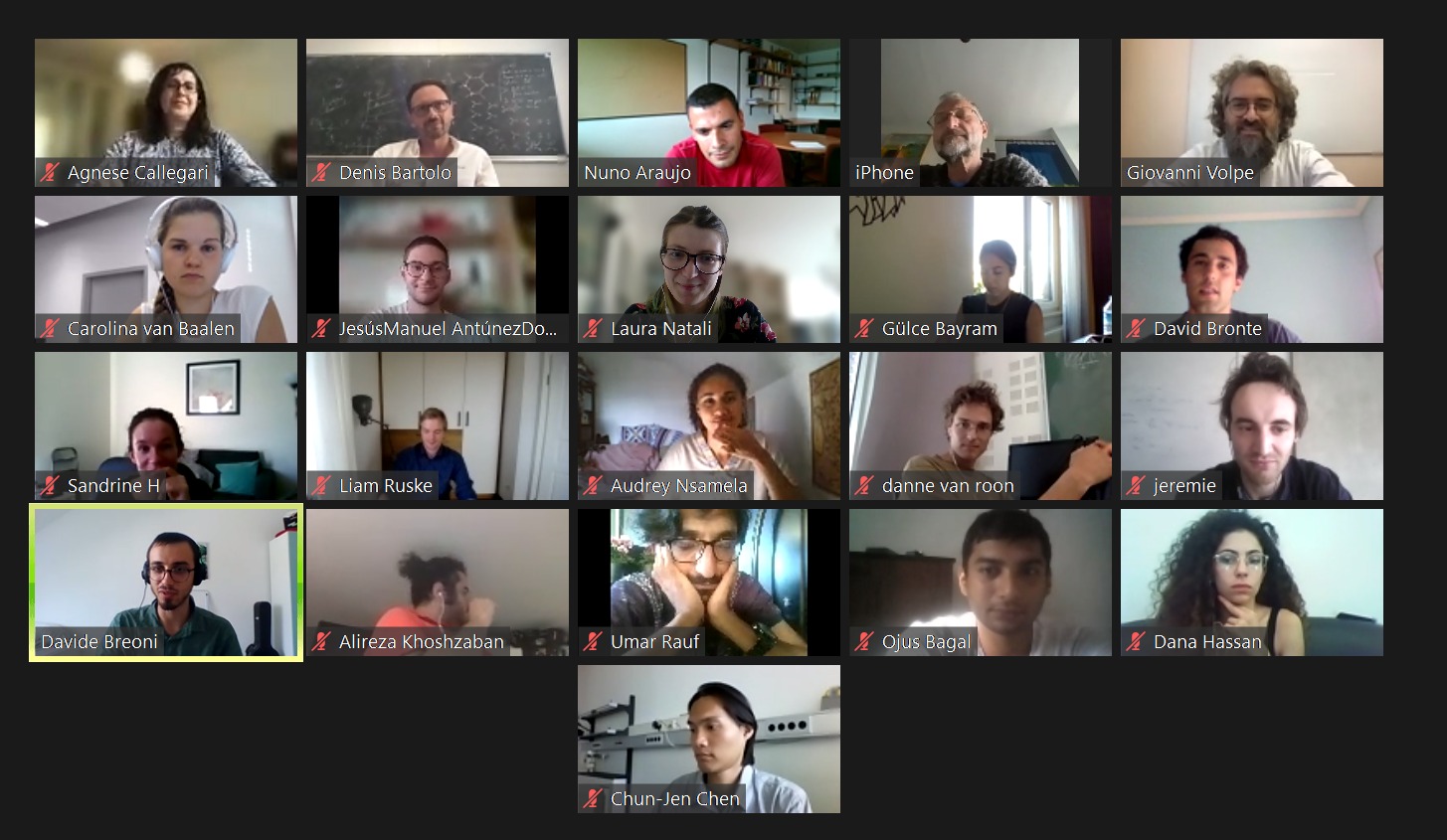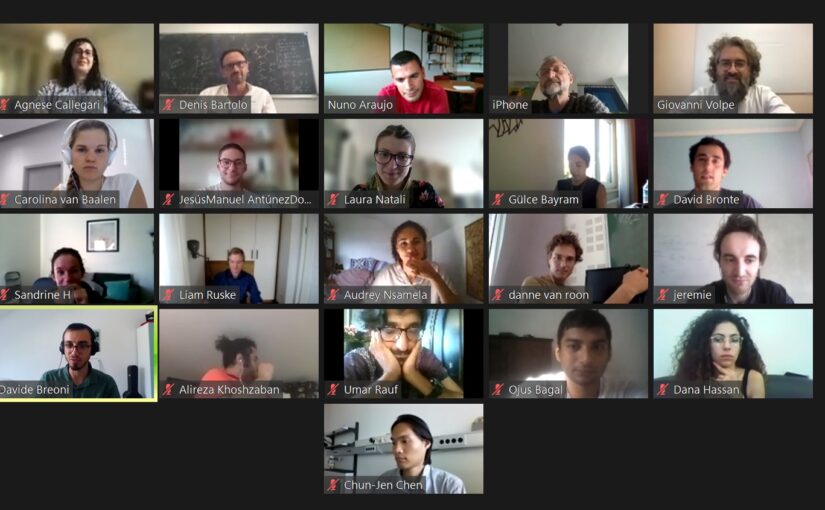
The first round table in the theoretical training gave a chance to start an interesting discussion which will continue in the following meetings.
The organizing ESRs were Ayten Gülce Bayram, Laura Natali, Liam Ruske, Jérémie Bertrand, Davide Breoni and Audrey Nsamela. They welcomed and introduced the three guests of the session: Nuno Araújo from the University of Lisbon, Jan Wehr from the University of Arizona and Denis Bartolo from École normale supérieure de Lyon.
The round table started with a personal question to the speakers about their interests and motivations for working in theoretical active matter. Having different backgrounds, the answers were very different, Nuno was attracted by non-intuitive behaviors observed in active matter experiments, while Jan started from a purely mathematical point of view and then moved towards physics of active systems. Denis provided another motivation, being head of a lab that deals with both theory and experiments.
The following discussion focused on the interaction and hierarchy between theory, simulations, and experiments. They all agree that establishing a constructive collaboration with experimental groups is not easy, but at the same time, it can have many benefits for both sides. However, none of the three elements is necessary for the others: a good paper can be presenting a theory not connected with experiments, even if its possible applications are not foreseeable yet. Denis firmly pointed out the difference between the observations and the tools (theoretical, numerical, and experimental) employed to explain it.
We also had a few more specific questions for the speakers, such as the distinctions in thinking between mathematicians and theoretical physicists, the possible applications to financial markets, and the differences in modeling artificial flocks and human crowds, which are often controlled by non-hydrodynamic variables.
We concluded the meeting by asking every one of our guests their tips for communicating the theory of active matter to a larger public. Here the answers were more relaxed and can be summed up as: trying to avoid technical and mathematical details while explaining the importance of the research problems, also using more familiar examples such as simulations employed in animation movies.

